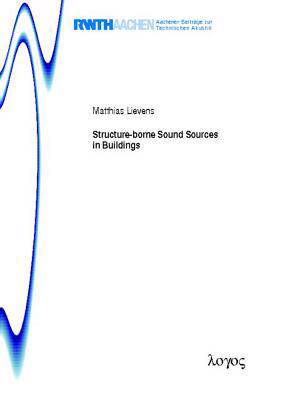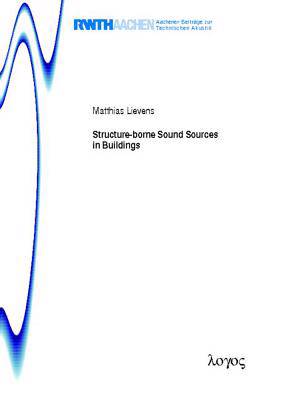
- Afhalen na 1 uur in een winkel met voorraad
- Gratis thuislevering in België vanaf € 30
- Ruim aanbod met 7 miljoen producten
- Afhalen na 1 uur in een winkel met voorraad
- Gratis thuislevering in België vanaf € 30
- Ruim aanbod met 7 miljoen producten
Zoeken
Omschrijving
Structure-borne sound sources are vibrational sources connected in some way to the building structure. The mechanical excitation of the building structure leads to sound radiation. This is an important source of annoyance in modern light-weight buildings. The prediction of the sound pressure level from structure-borne sound sources is highly complicated because of the complexity involved in the coupling between source and receiver structure. The current standard on characterisation of service equipment in buildings EN 12354-5, can deal with sources on heavy structures (high-mobility source) but to date, there is no engineering method available for the case of coupling between source and receiver. A case study of a washing machine on a wooden joist floor is investigated in this thesis. In the first part, measurements in the coupled state are conducted. It is shown that the normal components are sufficient to predict the sound pressure level. However, this only applies to the coupled state. In the second part, a true prediction is calculated from independently measured source and receiver quantities. The difference between predicted and directly measured sound pressure level leads to considerable errors of up to 20 dB at low frequencies. This shows that the normal components are not sufficient to predict the coupling between a washing machine and a wooden floor.
Specificaties
Betrokkenen
- Auteur(s):
- Uitgeverij:
Inhoud
- Aantal bladzijden:
- 104
- Taal:
- Engels
Eigenschappen
- Productcode (EAN):
- 9783832534646
- Verschijningsdatum:
- 30/07/2013
- Uitvoering:
- Paperback
- Formaat:
- Trade paperback (VS)
- Afmetingen:
- 145 mm x 211 mm
- Gewicht:
- 366 g

Alleen bij Standaard Boekhandel
+ 161 punten op je klantenkaart van Standaard Boekhandel
Beoordelingen
We publiceren alleen reviews die voldoen aan de voorwaarden voor reviews. Bekijk onze voorwaarden voor reviews.








